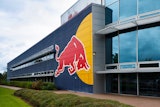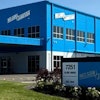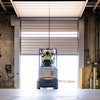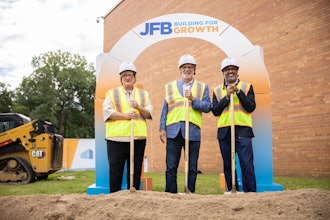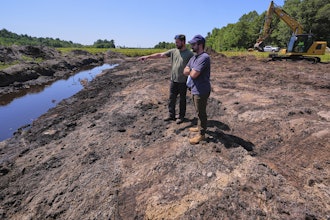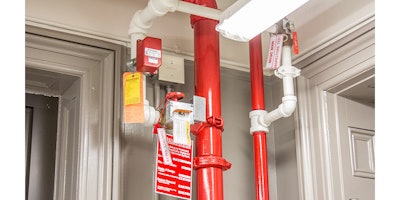
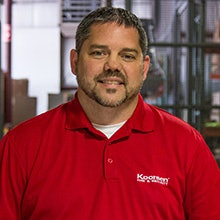 Billy Findley
Billy FindleyBelieve it or not, there’s a huge difference between testing and inspecting sprinkler systems.
Inspection is a careful examination or scrutiny, while testing takes measures to check the quality, performance or reliability of something, especially before putting it into widespread use or practice. The NFPA 25 code Testing and Maintenance of Water Based Fire Protection Systems list all of these requirements. It will make it clear what must be met for a system to be compliant. With numerous tests and inspections required throughout the year, how can food manufacturers be sure their systems meet regulatory standards?
Testing Vs. Inspecting: What’s the Difference?
While many tend to group both categories under inspections, the NFPA and other local codes have outlined a clear differentiation between the two. A sprinkler system inspection requires the technician to visually inspect the device, such as the sprinkler head, for issues such as paint buildup, leakage, corrosion and clearance below the sprinkler head. The technician will then make the decision if the sprinkler passes inspection, just by simple visual evaluation.
On the flip side, is testing of the entire system. The process for testing sprinkler systems is much more in-depth. It requires a technician to put the system through a series of functions including proper locking while in the open position, or even opening the butterfly valve to check the water pressure and flow.

Stick to the Schedule
The frequency of how often to inspect and test a sprinkler system is fairly dependent upon the industry, as well as local code enforcement. For example, while a bank — which is a non-hazardous environment — might only inspect their system on an annual cadence, a restaurant or food manufacturing facility will often inspect more frequently. Restaurants and other food production facilities utilize hazardous equipment, making them more likely to experience a fire. With that said, it’s important for those facilities to inspect their sprinklers in the hazardous areas more often. However, there is a more uniform standard technicians can follow for inspecting, testing and maintaining these systems:
- Weekly/Monthly: Inspections of gauges and control valves
- Quarterly: Inspection of the hydraulic nameplate, fire department connections and alarm devices
- Annually: Inspection of hanger bracing, spare sprinklers, signage, sprinklers and pipe fittings; Testing water flow, main drain, fire pump, antifreeze solution, pre-action valves and alarm devices; and necessary maintenance to the system
Other Regulatory Standards
While testing and inspecting a sprinkler system is vital for safety and compliance concerns, there are other regulations regarding the system that must be met to comply with specific standards. The one most often forgotten is signage. The NFPA and other local codes have outlined specific signage requirements for nearly every aspect of a sprinkler system. From control valves and their functional information, to fire department connection and their service area, there’s an instruction for every piece of equipment. In the food industry the common “employees must wash hands before returning to work” sign isn’t the only necessary instruction they must provide. But instead, there are signage requirements for all hazardous equipment and fire systems within the facility.
While the codes may seem complex and the timeline tedious and daunting, it’s important to meet regulatory standards within a facility. From testing and inspecting sprinkler systems, to meeting any and all signage requirements, one slip up could cause compliance setbacks.
Billy Findley is Vice President of General Products at Koorsen Fire and Security.
